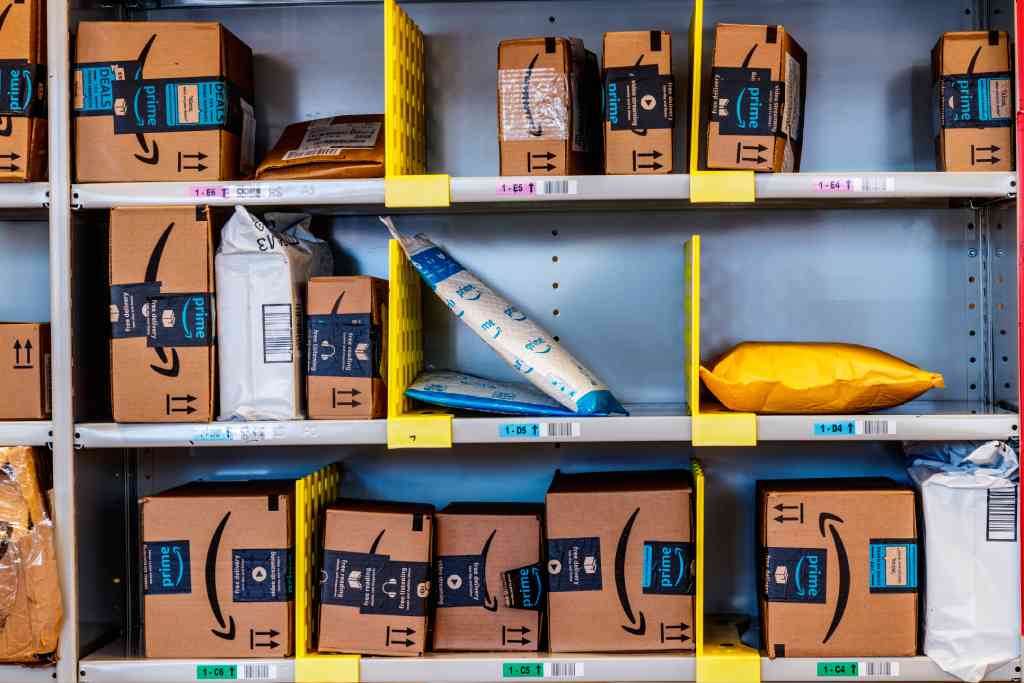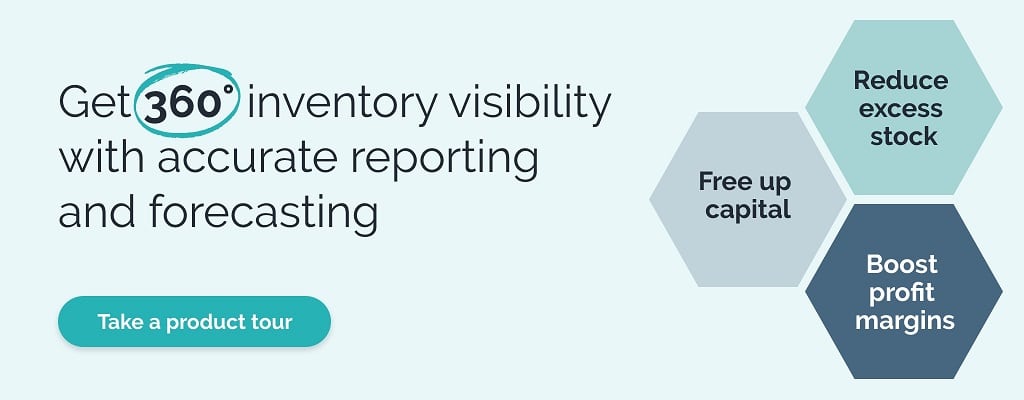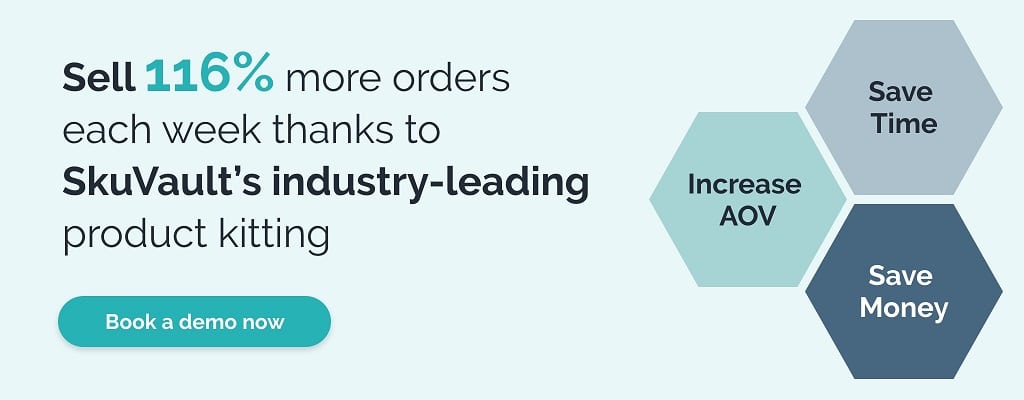
Amazon, the eCommerce giant, is more than just an online marketplace where you can buy virtually anything. It’s also a platform where you can profit from selling items without owning any inventory.
You read that right.
No need for boxes to clutter your living room or take up valuable warehouse space. Welcome to the world of Amazon FBA, FBM, and dropshipping.
Whether you’re an entrepreneur looking to kickstart your online business without a hefty investment or an existing business seeking to expand your retail presence without additional inventory, Amazon’s arsenal of “no-inventory” selling options has you covered.
In this guide, we’ll unpack the concepts of dropshipping, Fulfillment by Amazon (FBA), and Fulfillment by Merchant (FBM) and show you how to capitalize on these models to get more eCommerce sales.
Fasten your seatbelts and prepare for a deep dive into how to sell on Amazon without inventory!
How to Sell on Amazon Without Inventory 101
Selling on Amazon without inventory is like being a virtual middleman. You’re taking customer orders, forwarding them to your supplier, and letting them handle the rest.
No in-house inventory management, no fuss. No wonder so many Amazon sellers are moving to this model!
This model of selling products online revolves around three main strategies:
- Dropshipping
- Fulfillment by Amazon (FBA)
- Fulfillment by Merchant (FBM) + 3PL
Defining Dropshipping, FBA, and FBM
Dropshipping is a business model where you don’t hold any inventory. Instead, you partner with a wholesale supplier that stocks its own products.
When you sell, the supplier ships the products from their warehouse directly to your customer. In essence, you’re selling a product that you never physically have.
Fulfillment by Amazon (FBA) is a service provided by Amazon that takes care of storage, packaging, and shipping on your behalf.
You send your products to Amazon’s fulfillment centers, and when a customer places an order, Amazon packs and ships the product.
Fulfillment by Merchant (FBM) is when you sell on Amazon but handle the storage and shipping of your products yourself.
Unlike FBA, you don’t send your inventory to Amazon. Instead, you manage everything in-house or (if you’re committed to the no-inventory model) with a third-party logistics (3PL) provider.
Benefits of Selling Without Inventory
Cost Savings, Lower Risk, and Flexibility
The most significant advantage of selling without inventory is cost savings.
When you choose to sell products online (using a traditional fulfillment model), you must accept that you’ll only profit about half of your revenue.
41.54% to be exact.
Renting warehouse space, supplying that space with packing materials, and navigating the complex world of shipping providers are just a few of the costs of holding physical inventory.
Selling without inventory also offers a lower risk. Since you’re not purchasing a product until it’s already been sold, there’s less financial risk involved.
You won’t be left with a bunch of unsold products if things don’t sell as anticipated.
Finally, these models provide flexibility. You can add or remove products from your online store without worrying about unsold stock.
This flexibility allows you to experiment with different products to see what works best for your audience.
Amazon FBA: What It Is and How It Works

Fulfillment by Amazon (FBA) is a program where Amazon acts as your full-service logistics partner.
With FBA, you leverage Amazon’s expansive and advanced fulfillment network, freeing up your time to focus on growing your business.
Here’s how it works in more detail:
Product Shipment to Amazon’s Fulfillment Centers
After sourcing your products, Amazon sellers ship them directly to Amazon’s fulfillment centers.
These centers, spread across the globe, are massive warehouses run by Amazon where your products are received, sorted, and stored until an order comes in.
Storage and Inventory Management
Once Amazon receives your products, they take on the responsibility of storing them safely.
Your products are inventoried and integrated into Amazon’s advanced inventory tracking system, ensuring they’re ready for fulfillment when an order is placed.
Order Fulfillment
When a customer orders one of your products, Amazon springs into action.
They pick up the ordered product from their warehouse, pack it according to Amazon’s strict packaging guidelines, and ship it to the customer promptly.
This seamless process ensures prompt delivery and a positive customer experience.
Customer Service and Returns Management
Amazon’s role isn’t done after shipping the product. They also handle all customer service related to the orders, which includes fielding customer inquiries and complaints.
Moreover, if a customer decides to return a product, Amazon handles that as well, ensuring the return process is as frictionless as possible.
Reporting and Analytics
As a seller using FBA, you can access detailed reports and analytics about your sales performance. This data can be invaluable for making informed pricing, marketing, and product selection decisions.
FBA is a boon for businesses that prefer to outsource their logistics operations. It allows you to benefit from Amazon’s extensive infrastructure and customer service prowess while focusing on what you do best – sourcing or creating great products to sell.

Pros and Cons of Using Amazon FBA
Pros
- Ease of Use: Amazon handles everything from storage to shipping and customer service, freeing you to focus on your product line and marketing strategies.
- Prime Eligibility: FBA products are eligible for Amazon Prime, which can increase your visibility and customer base.
- Customer Trust: FBA products are fulfilled by Amazon, lending credibility to your business and enhancing customer trust.
Cons
- Cost: FBA can be expensive. You must account for storage fees, especially for slow-moving and seasonal items.
- Commingling Risks: If you choose to commingle your inventory (i.e., mix your inventory with the same items from other sellers), you risk your product being swapped with a lower-quality item from another seller.
- Limited Control: With FBA, you give up a degree of control, as Amazon handles your storage, packing, and shipping.
Amazon FBM: What It Is and How It Works

Fulfillment by Merchant (FBM), contrary to FBA, is an Amazon selling method where you, as the seller, have complete control over your inventory, order fulfillment, and customer service.
This method is preferred by sellers who want to keep hands-on control of their operations or those who can handle logistics more cost-effectively than Amazon’s FBA fees would allow.
It’s also worth mentioning that if sellers don’t want to manage inventory themselves but want to keep their products out of Amazon fulfillment centers, they can leverage a third-party logistics (3PL) provider in addition to FBM.
Integrating a 3PL provider in your FBM strategy allows you to enjoy the benefits of outsourcing fulfillment while still retaining more control over your inventory and customer service than you would have with FBA.
A third-party fulfillment center can be a game-changer for businesses, particularly those rapidly growing or dealing with complex shipping requirements.
Using a 3PL can lead to more efficient and professional handling of orders, which, in turn, can improve your seller’s reputation and increase customer satisfaction.
Furthermore, many 3PLs offer services beyond mere warehousing and shipping. These include inventory forecasting, kitting services, return management, and customer service support.
By offering these additional services, third-party inventory solutions can significantly lighten your operational load and give you more time to focus on growing your business.
Related post: 3PL Industry Trends: What to Watch Out For in 2023
Here’s a more in-depth look into the FBM process:
Product Listing
In FBM, you list your products on Amazon just like you would in the FBA model. You create a product listing detailing the product’s features, benefits, and pricing.
A good listing is crucial, as it’s the primary way customers learn about your product on Amazon.
Order Notification
Once a customer orders your product, Amazon sends you a notification. This notification includes important information like the customer’s delivery address and the product they’ve ordered.
Order Fulfillment
After receiving the order notification, you must fulfill the order. You pick the ordered product from your inventory, package it safely and professionally, and ship it directly to the customer.
It’s crucial that this process is swift and efficient, as Amazon uses seller shipping performance when determining product listing ranks.
Customer Service and Returns Management
Unlike FBA, you’re fully responsible for customer service in the FBM model.
This includes answering customer inquiries, handling complaints, and managing return requests.
This direct interaction with customers offers an opportunity for personalized service, which can build customer loyalty and positive feedback.
Performance Metrics and Reviews
As an FBM seller, monitoring your performance metrics and customer reviews on Amazon is essential.
These can include your order defect rate, cancellation rate, late shipment rate, and customer feedback and ratings you receive. Maintaining high performance and positive reviews is key to succeeding with FBM.
In essence, FBM puts you in the driver’s seat, letting you control the entire sales process.
It can be an excellent option if you want full control over your operations, have the capacity to store and ship products efficiently, or sell products that aren’t cost-effective under Amazon’s FBA fee structure.
Pros and Cons of Using Amazon FBM
Pros
- Control: You maintain complete control over your inventory, packing, and shipping.
- Cost Savings: Depending on your business model and product, FBM can be less costly than FBA since you’re not paying Amazon’s storage and fulfillment fees.
- Flexibility: You can quickly adapt to changes in your business without needing to ship inventory back and forth from Amazon’s warehouses.
Cons
- Time-Consuming: With FBM, you’re in charge of the entire fulfillment process, which can be time-consuming.
- No Prime Eligibility: FBM products are typically not eligible for Amazon Prime, which could limit your sales.
Dropshipping on Amazon: What It Is and How It Works

Dropshipping is a unique retail fulfillment model allowing you to sell products on Amazon without holding any products.
It is the epitome of how to sell on Amazon without inventory.
When a customer purchases a product from your store, you forward the order details to a third-party supplier, who then orders on your behalf, shipping the product directly to the customer.
Here’s a detailed breakdown of the dropshipping process:
Product Listing
As a dropshipper on Amazon, your first step is creating a product listing on your Amazon store. This product is one that your supplier has in stock. Your listing should be compelling and accurate, clearly detailing the product’s features, benefits, and pricing.
Customer Purchase
When a customer orders the listed product on your store, you receive a notification of the sale. The revenue from the sale goes to you.
Order Forwarding
After receiving the customer’s order, you then forward the order details, including the customer’s shipping address and product information, to your supplier.
Supplier Shipment
Once your supplier receives the order details, they pick, pack, and ship the product directly to your customer.
They do not include any of their branding or invoices in the package, so the customer assumes the product came directly from your store.
Customer Service and Returns Management
In a dropshipping model, you still handle customer service. This includes answering customer inquiries and managing return requests.
If a customer wishes to return a product, you would coordinate with your supplier to arrange the return or refund.
Dropshipping on Amazon can be an excellent business model for those looking to start selling online with minimal upfront investment.
It allows you to sell various products without needing to purchase inventory in advance or worry about storage and fulfillment.
It’s worth mentioning that dropshipping, while an attractive model for eCommerce selling, has become highly saturated over the last several years.
It’s still possible to make good money selling items with dropshipping, but it will likely require more creativity and some more work to find bankable products.
Check out this video for more information on how to get started:
Pros and Cons of Dropshipping
Pros
- No Inventory Required: You only purchase a product after the customer has made a purchase, significantly reducing your risk.
- Low Startup Costs: With no inventory to purchase upfront or manage, dropshipping is a cost-effective way to start selling on Amazon.
Cons
- Lower Profit Margins: Since you’re sourcing products from third-party suppliers, the profit margins for dropshipping tend to be lower.
- Limited Control: You have little control over the shipping process and product quality, which can lead to customer service challenges.
- Deeply Saturated: Many sellers have turned to dropshipping as a way to make fast, risk-free money. This means the barrier to entry is low, and successful sellers will need to get creative to find profitable products.
How to Choose the Right Strategy for Your Business
Determining the right strategy for your business—whether it be Fulfillment by Amazon (FBA), Fulfillment by Merchant (FBM), or dropshipping—requires careful consideration of various factors.
These can range from your initial budget and the amount of time you can devote to your business, to the type of products you’re selling and your overall business objectives.
Here’s a closer look at how these factors can influence your choice:
Budget
If you’re starting with a smaller budget, FBM or dropshipping may be better suited for you. FBA requires upfront inventory investment and additional storage and fulfillment fees in Amazon’s warehouses.
On the other hand, dropshipping requires very little upfront cost as you don’t purchase the product until after the customer has paid. FBM requires you to handle shipping, but if you already have an established process for shipping and handling, it may not be a significant cost.
For example, a small business owner selling handmade crafts might choose FBM because they already have a workshop for production and storage and would prefer to save on FBA fees.
Time
Amazon FBA might be your best bet if you’re pressed for time. It eliminates your need to handle shipping, returns, and customer service, as Amazon takes care of these areas.
However, if you prefer to maintain control over these aspects or sell products requiring special care or knowledge to ship, then FBM might be a better fit.
For instance, a business owner selling vintage electronics may opt for FBM due to their familiarity with such items’ special packaging and handling requirements.
Product Type
The type of products you sell can significantly influence your choice. Bulky or heavy items may be costly to ship on your own, making FBA a better option.
However, items with a high profit margin or those that are lightweight might be more profitable to ship yourself using FBM.
With dropshipping, the range of products you can sell is broader, as you don’t have to buy them upfront, but you need to ensure the supplier can deliver a quality product on time.
For example, an entrepreneur selling designer homewares may go with dropshipping to leverage a diverse product range without a significant upfront investment.
Business Goals
If your goal is to scale quickly, FBA might be the best choice as it allows you to reach a larger customer base and leverages Amazon’s logistics capabilities.
However, if you want to maintain more control over your brand and customer relationships, FBM or dropshipping might be better suited for your needs.
For instance, a growing business to reach national or international customers might opt for FBA to tap into Amazon’s vast customer base and advanced logistics network.
Each method has its unique set of benefits and challenges. Evaluating your resources, needs, and business goals can help you find the most balanced approach regarding profit, control, and scalability.

Best Practices for How to Sell on Amazon Without Inventory
Knowing how to sell on Amazon without inventory has distinct advantages, but that doesn’t mean it’s a walk in the park.
To ensure your success with this approach, here are some best practices to keep in mind:
1. Choose Your Suppliers Carefully
Whether you’re dropshipping, using FBA, or FBM with a 3PL, the reliability of your supplier plays a significant role in your success.
Research potential suppliers thoroughly, evaluate their reliability, and ensure they can meet your demands.
Consider factors like their reputation, product quality, delivery speed, and return policies.
2. Manage Your Inventory Effectively
Even though you don’t physically handle the inventory, you must keep track of it. Use a reliable inventory management system, like SkuVault, to ensure your listings always reflect the actual stock levels.
This can help prevent situations where a product is sold out at the supplier but still listed as available in your store, leading to a poor customer experience.
3. Optimize Your Listings
Optimizing your product listings is crucial to attracting potential customers. Use high-quality images, compelling descriptions, and relevant keywords.
Keep your product titles concise yet informative. A well-optimized listing ranks higher in Amazon’s search results and convinces customers to click ‘Add to Cart.’
4. Provide Excellent Customer Service
Your customer service plays a significant role in your business success. Remember, your customers don’t care who your supplier is – they bought the product from you.
Therefore, handle customer inquiries, returns, and refunds promptly and professionally. A happy customer is likelier to leave positive reviews, improving your seller’s reputation.
5. Monitor Your Performance
Track your performance regularly to identify areas that need improvement. Monitor key metrics such as sales, return rate, customer reviews, and seller ratings.
Amazon’s Seller Central provides a wealth of data that you can use to assess your performance and make data-driven decisions.
6. Stay Compliant with Amazon’s Policies
Amazon has strict rules for sellers, including those selling without inventory.
Trust us, the last thing you want is to wake up to an email saying your Amazon Seller Account was banned due to terms of service violations.
Make sure you’re familiar with Amazon’s policies for sellers and stay compliant to avoid penalties, suspensions, or even being banned from the platform.
Embracing these best practices can help you successfully navigate the world of selling on Amazon without inventory, maximizing your profits while ensuring customer satisfaction.
Sell Digital Products: Another Way to Sell Without Inventory
In the world of eCommerce, there’s yet another strategy for selling on Amazon without inventory that’s been gaining popularity: selling digital products.
Digital products are items that exist in digital form such as eBooks, music, digital art, software, online courses, templates, or printable items.
These products can offer a high profit margin as they require no physical materials, manufacturing, or shipping.
Once created, they can be sold infinite times without additional production costs.
If you want to sell digital products, follow these steps:
- Create a digital product. This could be an eBook, a music file, a software application, or any other kind of digital media.
- Set up a seller account on the Amazon Digital Services platform.
- Upload your digital product and set your pricing.
- When a customer purchases your product, Amazon handles the distribution. The customer can immediately download or access the product.
This is obviously an oversimplification of the process, but if you want to go this route, check out this video:
There are several advantages to selling digital products. They provide an excellent way to diversify your offerings and reach a wider audience.
They also tend to yield high-profit margins, thanks to their low overhead and production costs.
Plus, since there’s no physical product, there are no concerns about inventory management, shipping, or fulfillment.
However, like any business model, this selling digital products has challenges. These can include stiff competition, the need for continuous updates to stay relevant, and the necessity of robust digital security.
Therefore, careful planning, ongoing market research, and quality product development are crucial for success in this kind of ecommerce selling.
Frequently Asked Questions about How to Sell on Amazon without Inventory
Can I do Amazon FBA without inventory?
Yes, you can utilize Amazon FBA without having your own inventory through methods like dropshipping or retail arbitrage (check out our blog post on retail arbitrage for more on the topic).
However, these methods have their own set of rules and requirements that you need to follow according to Amazon’s policy.
What is the minimum inventory to sell on Amazon?
There’s no set minimum inventory requirement to sell on Amazon.
However, it’s essential to maintain an adequate stock level to meet customer demand and avoid stockouts, which can negatively affect your seller rating.
Can I make $1000 a month selling on Amazon?
Yes, it’s possible to make $1000 a month selling on Amazon, but your amount depends on several factors, including the type of products you sell, your pricing strategy, and your marketing efforts.
It’s also important to consider Amazon’s fees and your other expenses.
Is it realistic to make money selling on Amazon?
Yes, making money selling on Amazon is realistic, but it requires research, effort, and an understanding of the marketplace.
Success isn’t guaranteed, and profits vary widely among sellers. It’s important to understand the costs involved, including Amazon’s fees, goods sold, and advertising or marketing costs.
How do I make passive income on Amazon without selling physical inventory?
There are several ways to earn passive income on Amazon without selling products:
- Amazon Affiliate Program: Earn commissions by promoting other sellers’ products.
- Amazon Kindle Direct Publishing (KDP): Write and publish an eBook or paperback once, and earn royalties on the sales for years to come.
- Amazon Merch on Demand: Design and upload your designs once, and earn royalties every time your design is sold.
Final Thoughts and Next Steps
Learning how to sell on Amazon without inventory is an attractive proposition that can save you time, reduce risk, and lower overhead costs.
However, this kind of selling requires careful strategy and execution. By understanding the pros and cons of FBA, FBM, and dropshipping, you can choose the best path for your Amazon business.
Start small, learn as you go, and scale your operations as you grow your sales.
SkuVault’s inventory management software can help you remotely manage inventory effectively across all your sales channels, improve operational efficiency, and ultimately boost your profitability.

